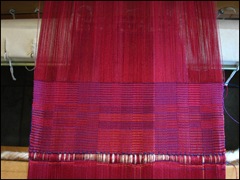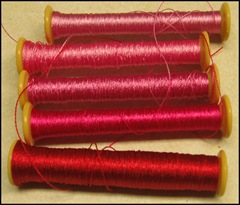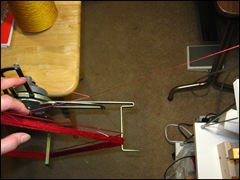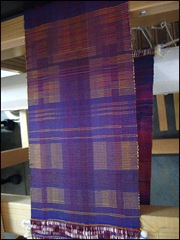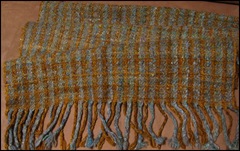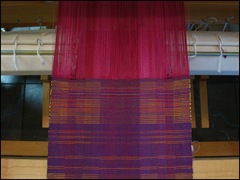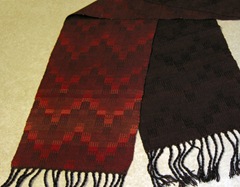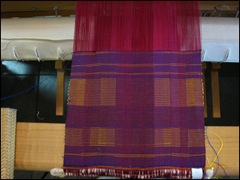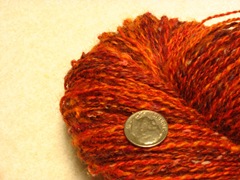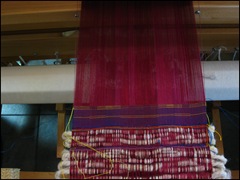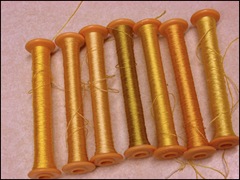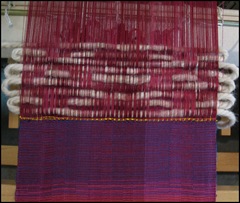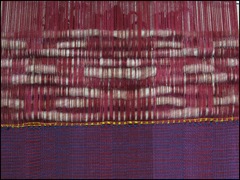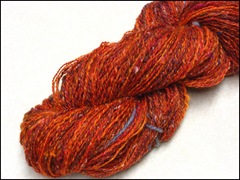Cherri has tagged me, so here goes.
What were you doing five years ago?
I'm really really bad with dates so the answers here are really guesses.
1. Weaving, probably working on CHG's learning program.
2. Editing CHG's monthly newsletter.
3. Working on my spinning.
4. Singing in the church choir.
5. Visiting Atlanta frequently for concerts
What are five things on your to-do list for today (not in any particular order)?
1. Weave more on my art piece
2. Work out the details of my next post on handspun.
3. Go to the grocery store.
4. Cook dinner
5. Fold laundry
What are five snacks you enjoy?
1. Mozzarella cheese
2. Whole wheat chips
3. Popcorn
4. Apples
5. Cottage cheese, with walnuts and seasonal berries
What five things would you do if you were a billionaire?
1. Give St. John's enough money to buy a new pipe organ.
2. Establish an endowment for the music program at St. John's
3. Seriously increasing charitable giving.
4. Minor renovating of our house including, but not limited to, lighting improvements, better storage facilities for fiber and fiber equipment, more book shelves.
5. Hire a gardener to help me cope with my growing landscape and all the new plants (shrubs, trees, perennials) I cannot resist as well as with all the moving around of plants I continually do.
What are five of your bad habits?
1. Using the computer as a procrastinating tool
2. Not going to bed when I should
3. Interrupting my husband when he talks (he really hates this!)
4. Putting off making phone calls
5. Snacking before bed
What are five places where you have lived?
1. Brooklyn, NY
2. Milwaukee, WI
3. Champaign-Urbana, IL
4. State College, PA
5. Oxford, OH
What are five jobs you’ve had?
1. Public library aide
2. Office worker in department store
3. Graduate assistant in English
4. Professor of English
5. Housewife and mother
Which five people do you want to tag?
Any five people who would like to share.
© 2008
